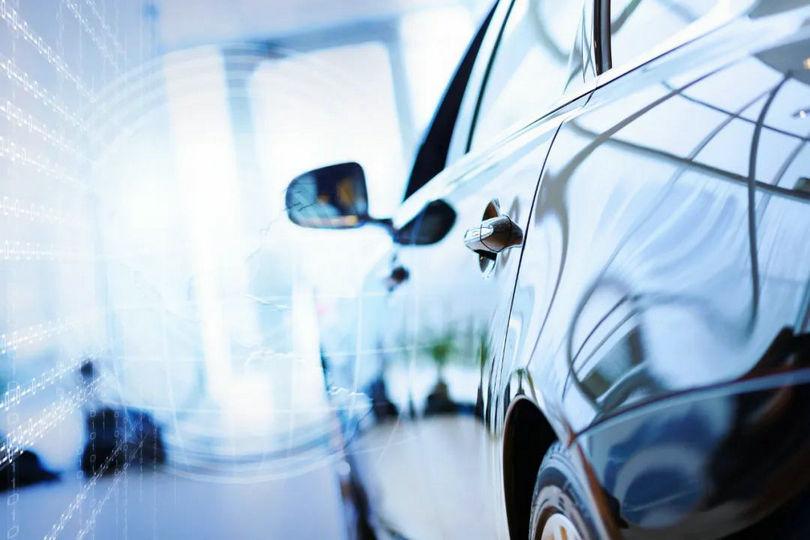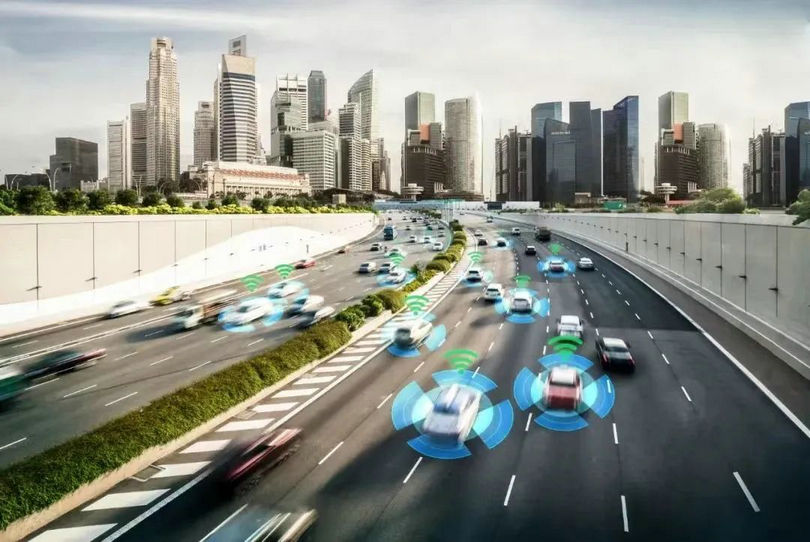| Will the "first" that is worth waiting for in 2023 come into reality? |
| Release time:2023-01-10 13:56:32| Viewed: |
Will the "first" that is worth waiting for in 2023 come into reality?
Pre-edition: a new beginning, everything is new. In 2022, although China's automobile industry has encountered many challenges and difficulties, it still made gratifying achievements: the scale of the new energy vehicle market continues to expand, the market share of its own brands continues to increase, and the export of automobiles maintains a high-speed growth trend... This can not help but make people hold higher hopes and expectations for China's automobile industry this year. In 2023, will the "first" that people expect come into reality?
01 Will auto export win the world?
In 2021, China's automobile export volume reached 2.015 million, with a year-on-year increase of 101.1%, surpassing South Korea and ranking third in the world. From January to November 2022, China's automobile exports reached 2.785 million, with a year-on-year increase of 55.3%, surpassing Germany and ranking second only to Japan. It is predicted that China's new car export will be about 3.2 million in 2022, and Japan's will be about 3.5 million. In 2023, China's automobile export is expected to surpass Japan, ranking first in the world. "Whether we can surpass Japan this year depends on the specific gap between the two sides. There are also two important reference factors, namely, the recovery of the global industrial chain and the growth momentum of new energy vehicles." Bai Ming, deputy director of the International Market Research Institute of the Research Institute of the Ministry of Commerce, told reporters that China's export amount of automobile products this year may not exceed Japan, but we should strive to exceed it in quantity.
In recent years, China's automobile exports have finally swept away the previous haze. After crossing the threshold of 2 million vehicles in 2021, the total export volume last year is expected to exceed 3 million vehicles. According to the statistics of China Automobile Industry Association (hereinafter referred to as "CAAC"), from January to November 2022, China's automobile enterprises exported 2.785 million vehicles, up 55.3% year on year. Among them, 2251000 passenger cars were exported, up 57.8% year on year; The export of new energy vehicles was 593000, a year-on-year increase of twice.
In contrast, the growth rate of the total export volume of Germany and Japan is far lower than that of China. According to public data, from January to November last year, Germany exported 2.4 million new cars, an increase of about 11% over the previous year, but still lower than 2019 before the outbreak of the epidemic; From January to October last year, the total export volume of Japanese cars was 3.0844 million, down 0.3% year on year.
In the view of industry insiders, one of the reasons for this contrast is that the quality, technology and brand service level of China's automobile products have been continuously improved, and the international competitiveness has been gradually enhanced, which makes the growth of China's automobile exports show a rapid trend; The second reason is the rapid growth of China's new energy vehicle market. Some industry insiders even believe that compared with most foreign competitors, China's new energy vehicle products have formed a greater advantage, adding the pressure of carbon reduction and carbon reduction, and the demand for new energy vehicles in overseas markets has increased sharply, thus helping the rapid growth of China's automobile exports; The third reason is the continuous spread and spread of the global epidemic. Many foreign automobile enterprises have encountered problems in logistics, production and supply, resulting in a decline in production capacity. According to the statistics of Japanese media, the production reduction scale of major Japanese automobile enterprises has reached 1.2 million vehicles in 2022. In the first 11 months of 2022, almost every month can see the local production reduction statements of five major Japanese automobile enterprises.
Some insiders estimate that with the continuous increase of China's automobile exports, especially the rapid growth of new energy vehicles, China's automobile exports are expected to exceed 4 million in 2023, achieving leapfrog growth.
"In 2022, China's automobile exports achieved a year-on-year growth of more than 50%, including the doubling of new energy vehicles. I think that the growth momentum is expected to maintain in the short term, but whether it can maintain such a high growth rate this year, I'm afraid there are still many difficulties." In my view, China's automobile exports still face many challenges this year. First of all, the toughness of the industrial chain and supply chain in some developed countries is not bad. Even if there are some breakpoints, they can find replacements quickly because they have mastered the core technology, and successfully make up for the weaknesses; Secondly, the economic slowdown in Europe and the United States may have a negative impact on China's automobile exports. Tesla Chief Executive Officer Musk once proposed that if the United States fell into recession in 2023, it might be equivalent to 2009, which means that the demand for any optional discretionary projects will be reduced. It can be predicted that if the economy in Europe and the United States is in recession, the following will be a sharp decline in consumption, which will inevitably include automobiles. At that time, China's automobile exports will also decline to a certain extent; Third, the automobile manufacturing industry in Southeast Asia is also in a rapid development stage, and they may become competitors for China's automobile export.
Chen Shihua, Deputy Secretary-General of the China Automobile Association, stressed that China's automobile export has achieved good results, but it is necessary to focus on whether the foreign market will take international trade measures, while focusing on improving other competitiveness of China's automobile enterprises such as overseas factory construction and after-sales service network construction. Don't be blindly optimistic.
02 Will it be the beginning of "China Brand Year"?
In 2022, Chinese brands made great strides and joint-venture brands struggled. The market share of independent brands frequently crossed the threshold of 50%, while the advantages accumulated by joint-venture brands over the past decades became dim. It is predicted that the market share of independent brands will continue to expand in 2023, and the market share of the whole year may exceed 50% for the first time, setting a new record. "In 2023, the market share of independent brands will certainly continue to rise." Cui Dongshu, the secretary general of the National Passenger Car Market Information Association, said that new energy vehicles are recognized and loved by more and more consumers. This market is just the advantage area of independent brands. Therefore, the growth of market share of independent brands will become the norm in the future, and it is expected to reach 60% - 70% eventually.
The market share of independent brands has always affected the hearts of people inside and outside the industry. In 2020, the market share of self-owned brand cars in China fell to the lowest level since 2006, and the market share of self-owned brand cars in the year was only 38.4%. Even if the time line is extended for 10 years, the market share of independent brands has never reached 50%, but hovered at the level of 40% for many years. Unexpectedly, in 2022, independent brands not only crossed the "red line" of 40%, but also frequently exceeded the high level of 50%.
In April 2022, the market share of self-owned brand passenger cars exceeded 50% for the first time; From September to November, the market share of independent brands exceeded 50% for three consecutive months; From January to November, 10.479 million self-brand passenger cars were sold, accounting for 49.2% of the market. With the overall rise of independent brands, the share of major joint venture brands has shrunk to varying degrees, and the second-tier and third-tier joint venture brands are even accelerating their withdrawal from the Chinese market. In April 2022, GAC Acura announced that it would officially withdraw from the Chinese market in 2023; In July, Stellantis announced the termination of the joint venture with GAC, and in October, GAC Fick applied to the court for bankruptcy. Near the end of the year, the Volkswagen brand Skoda was also revealed to be considering repositioning the Chinese market.
Some analysts believe that the main reason why the joint venture brands fall behind is that they have not kept up with the pace of electric and intelligent transformation in time. Taking new energy vehicles as an example, even after experiencing multiple challenges such as shutdown, changing epidemic situation, and shortage of parts, China's share of new energy passenger vehicles in the world's new energy vehicle market will still reach 63% from January to November 2022, of which the share has climbed to 66% in November.
In order to reverse the situation, the pace of electric and intelligent development of joint venture brands is also accelerating: last November, GAC Toyota launched its new all-electric SUVbZ4X, and then Dongfeng Nissan, GAC Mitsubishi and other Japanese joint venture brands also launched all-electric models. So far, all joint-venture brands in China have pure electric products.
In the view of An Qingheng, director of the China Automobile Industry Advisory Committee, most mature joint venture brands have accumulated a solid foundation, which gives them some advantages in seizing the market share of new energy vehicles. However, An Qingheng believes that today's independent brands have certain competitiveness in the field of new energy vehicles, and will not be afraid of the fierce market competition brought by the entry of joint venture brands.
Cui Dongshu held the same view. He pointed out that due to the high domestic oil price and low electricity price, electric vehicles will be welcomed by more and more consumers, and the market scale is expected to continue to expand. In this context, it is still difficult for the electric products of the joint venture brands to compete with the independent brands. In addition, the system capacity of the joint venture enterprises is poor, and most of the research and development are not in China, so it is difficult to have the advantages of the Chinese industrial chain. Therefore, the increasing market share of the independent brand automobile enterprises will become the norm. There is no "ceiling" in the short term, and it is expected to reach 50% - 60% this year.
"If we are optimistic, in the next few years, the share of independent brands in the domestic market is expected to reach 60% - 70%," Cui Dongshu said.
03 Who is the first profitable new force of car building?
If the sales volume is the most commendable and shared achievement of the new energy vehicle enterprises in the past two years, then the profit is the "pain" in their hearts. However, with the rapid growth of the sales of new energy vehicles in the market, the new forces of car building began to set a profit point for themselves. Not long ago, Li Bin, the founder, chairman and CEO of Weilai, said on the conference call of Weilai's financial report in the third quarter of 2022 that Weilai could achieve a breakeven in the fourth quarter of 2023. Coincidentally, almost at the same time, Li Xiang, the founder of Ideal Automobile, also proposed that the moment when the ideal L9 and L8 were delivered at the same time would say goodbye to the loss operation for seven consecutive years. You know, at present, except for a few car companies such as Tesla and BYD, the vast majority of new energy car companies are still in the awkward position of "selling one car at a loss". In 2023, will their profit dreams come true? Who can become the first new force to make profits?
Shortly after Li Bin and Li Xiang announced that they were about to make profits, the topic "Xiao Peng lost more than 80000 yuan per car sold" hit the hot spot. According to media reports, according to Xiaopeng's revenue loss and the number of cars sold, Xiaopeng lost about 80500 yuan per car sold. At the same time, the news that Nezha lost 40000 yuan per car sold was also concerned and discussed by public opinion. It is reported that according to previous media calculations, Nezha Motors will have a net loss of 2.9 billion yuan in 2021, and a total of 69000 vehicles will be delivered in 2021, which translates into a loss of 42000 yuan when Nezha Motors sells one vehicle. Of course, the losses are far more than those of these two cars. The difference between Zero and Nezha is almost the same. According to the public data, from January to September last year, Zero delivered 88000 cars. Based on the loss of 3.784 billion yuan in the first three quarters, the average loss of each car is about 43200 yuan.
However, it is surprising that Xiaopeng is not the most money-losing car brand. According to the financial report data released by Weilai on November 10, 2022, its revenue in the third quarter of 2022 was 13 billion yuan, and its adjusted net loss was 3.5 billion yuan. Here, based on the 32000 new cars delivered in the third quarter, Weilai lost about 110000 yuan in selling a car. Lan Tu lost more than Wei Lai. It is reported that Landau sold 6791 new cars in 2021. Based on the net profit divided by the sales volume, Landau lost about 104000 yuan for each new car sold. In the first half of last year, Landu sold 5676 new cars. Also calculated by dividing net profit by sales volume, Landu lost 129900 yuan for each new car sold. This makes Landau ranked first in a loss list based on the sales volume and net profit of automobile enterprises.
However, the loss of new energy vehicle enterprises is true, but it is not accurate to calculate the loss amount in this way. As early as at the information conference in September 2022, Chen Shihua expressed his disagreement with this calculation method. He believed that the key data to judge whether the car sales are profitable is "gross profit of the whole car". As for the difficulty of making profits for new energy vehicle enterprises, Chen Shihua believes that another key factor lies in the rising prices of upstream raw materials and components. "The sales volume of new energy vehicles is indeed increasing, but for most auto companies, the increment does not increase the profit, which directly leads to the very poor profit level of domestic new energy vehicle companies." Chen Shihua said, coupled with the withdrawal of new energy vehicle subsidies, new energy vehicle companies, especially some small manufacturers, want to digest this part of the rising costs, it is not easy.
So, which new car building force is more likely to take the lead in achieving profits in 2023? "The cost of the new force of car building is too high. Even if the product can be at the same price level as the traditional new energy vehicle enterprises, it may be difficult to make profits." Cui Dongshu believes that the new brands of the traditional vehicle enterprises, Aian and Jikron, are more likely to make profits. On the one hand, from the perspective of market sales, the trend of new energy brands of traditional automobile enterprises is becoming stronger and stronger, and the new power of car building is beginning to weaken, which directly leads to the scale effect of the former will appear faster; On the other hand, the new energy subsidiary system of traditional automobile enterprises is stronger and has the support of the parent company.
Will it be the first year of automobile intelligent competition?
The year 2023 has come, and the intelligent connected automobile industry is full of hope: Xia Yiping, the chief executive of Jidu Automobile, called it "the first year of intelligent automobile competition", while Liu Weihong, the co-founder and president of Heizhima Intelligent, regarded it as "the first year of the landing of domestic high-performance automatic driving chips", and some business people believed that 2023 was "the first year of the expansion of L2+, L2++, or integrated travel and parking solutions". In response, Wang Yu, Executive Deputy Secretary-General of the China Productivity Promotion Center Association, said in an interview with reporters: "This year, the competition for intelligent Internet-connected vehicles will become more intense, but at the same time, more exploration and collision will also be born, presenting the development trend of 'a hundred flowers blooming'. All parties will interpret and practice from different angles, and finally hope to form some consensus."
Looking back over the past year, China's intelligent connected vehicles have continued to make strides: the development path of the "China Plan" has become increasingly clear, and the C-V2X cellular vehicle network led by China has become the mainstream of the global vehicle network communication technology; "Chinese standards" lead the world. The first international standard in the field of automatic driving test scenarios, ISO34501 "Vocabulary of Road Vehicle auto drive system Test Scenarios", which was developed under the leadership of China, was officially released last October; The popularity of the policy has only increased but not decreased, which has promoted the rapid increase of the penetration rate of the intelligent connected vehicle market, the continuous expansion of the open test area of automatic driving, and the gradual transfer of application scenarios from demonstration testing to actual operation
So, what will be the competition situation in various fields of intelligent connected vehicles this year? Wang Yu thinks it can be seen from two tracks. The first is the field of intelligent networking technology for mass production vehicles. This track is indeed very competitive, and the technology content of products has been in direct proportion to the market sales, including automatic parking, intelligent cockpit, emergency braking, vehicle maintenance guidance, etc. The functions of mass production products are becoming more and more; The second is the field of advanced automatic driving technology. Among them, the development of automatic driving technology companies positioned as suppliers will be relatively stable this year, while those who want to complete the business closed-loop by themselves will continue to face the two key issues of efficiency and cost this year. "To put it bluntly, whoever runs ahead and solves the problems of efficiency and cost first will be recognized by the market. Those who run behind will basically be in a state of suspension or even direct withdrawal," said Wang Yu.
In Wang Yu's view, the whole industry will present five new trends this year.
First of all, the relevant policies and regulations of intelligent connected vehicles will be more open. From the first trial in Beijing last year, to Shenzhen allowing fully autonomous vehicle to be legally driven in a limited area, and then to the Ministry of Industry and Information Technology of the People's Republic of China (MIIT) issuing the Notice on the Implementation of Pilot Work for Access and Road Access of Intelligent Connected Vehicles (Draft for Comments), these have laid the foundation for further liberalization of relevant policies. There is reason to believe that the exploration and formulation of relevant policies in 2023 will become more pragmatic and more intensive.
Secondly, the process of commercialization or industrialization will become an important basis for evaluating the development of ICV. From the investment of capital to the participation of commercial insurance, the "bull" that has been "boasted" by the intelligent connected automobile enterprises for so many years has reached the critical point that needs to be fulfilled. In 2023, both the commercial exploration of automatic driving technology and the application of intelligent functions in mass production vehicles will move towards a more mature direction.
Third, the testing and evaluation of the industry is expected to become more scientific. Perhaps it is still at the stage of "talking to yourself", but as long as there is enough practice and test, a more objective, scientific and reasonable evaluation system for the intelligent connected vehicle will be available.
"The fourth trend is that quality and safety must be the key points to be strictly controlled by the Intelligent Connected Vehicles this year. In fact, if quality and reliability are passed, the products will be safer, and the three are integrated." Wang Yu said, the last trend is that this year, the Intelligent Connected Vehicles and the cooperation between the vehicle and the road and the smart city should still be in the exploration stage, and the development direction and trend are still uncertain. |







